For the last ten days I’ve been touring gardens in Scotland and the north of England. A few days ago the group I’m hosting stopped to investigate two prehistoric standing stones.
Their setting could not be more prosaic — a hayfield close to a busy highway, not far from the city of York — but the stones standing there were anything but.
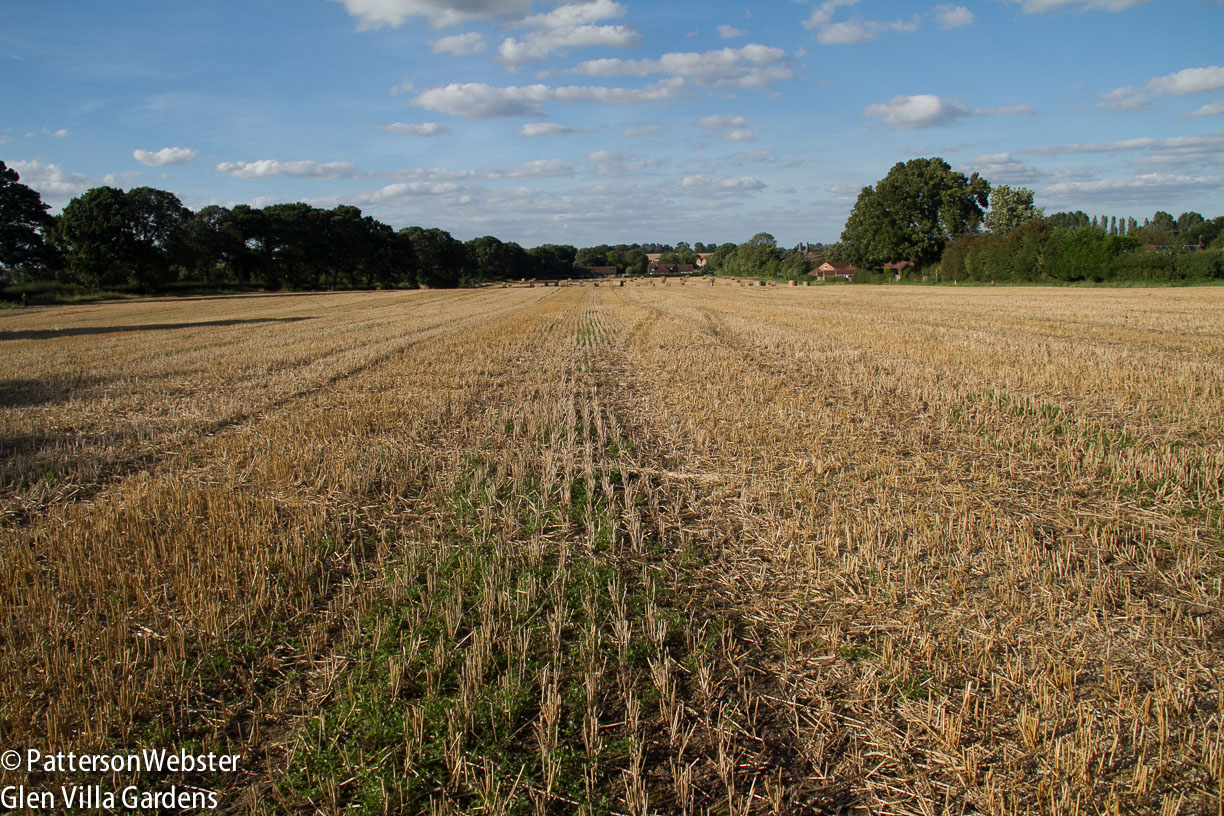
Thankfully the hayfield had been cut, allowing us to cross the field without damaging the crop.
The stones date from neolithic times, 3500-2500 BCE. The taller stone stands 22 1/2 feet high, with an estimated five feet or more underground, making it the second tallest menhir in the United Kingdom. (At 25 ft, the Rudston monolith is the tallest; it is also in Yorkshire but some 60 miles away.)
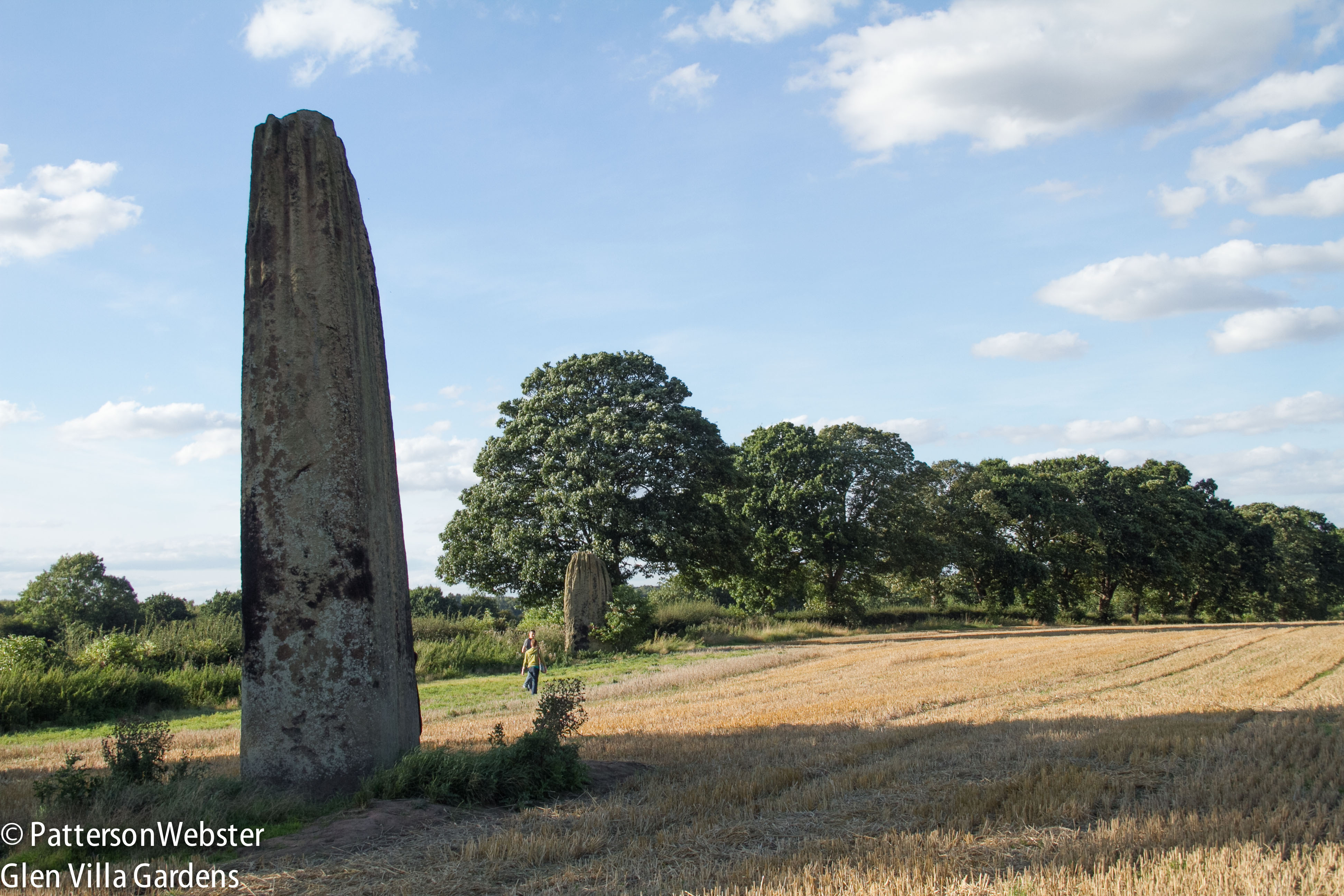
The person standing between the stones gives a sense of how large they are. The uneven edge silhouetted against the sky shows how deeply the stones are grooved.
Another stone, much shorter, stands nearby, at the edge of the field.
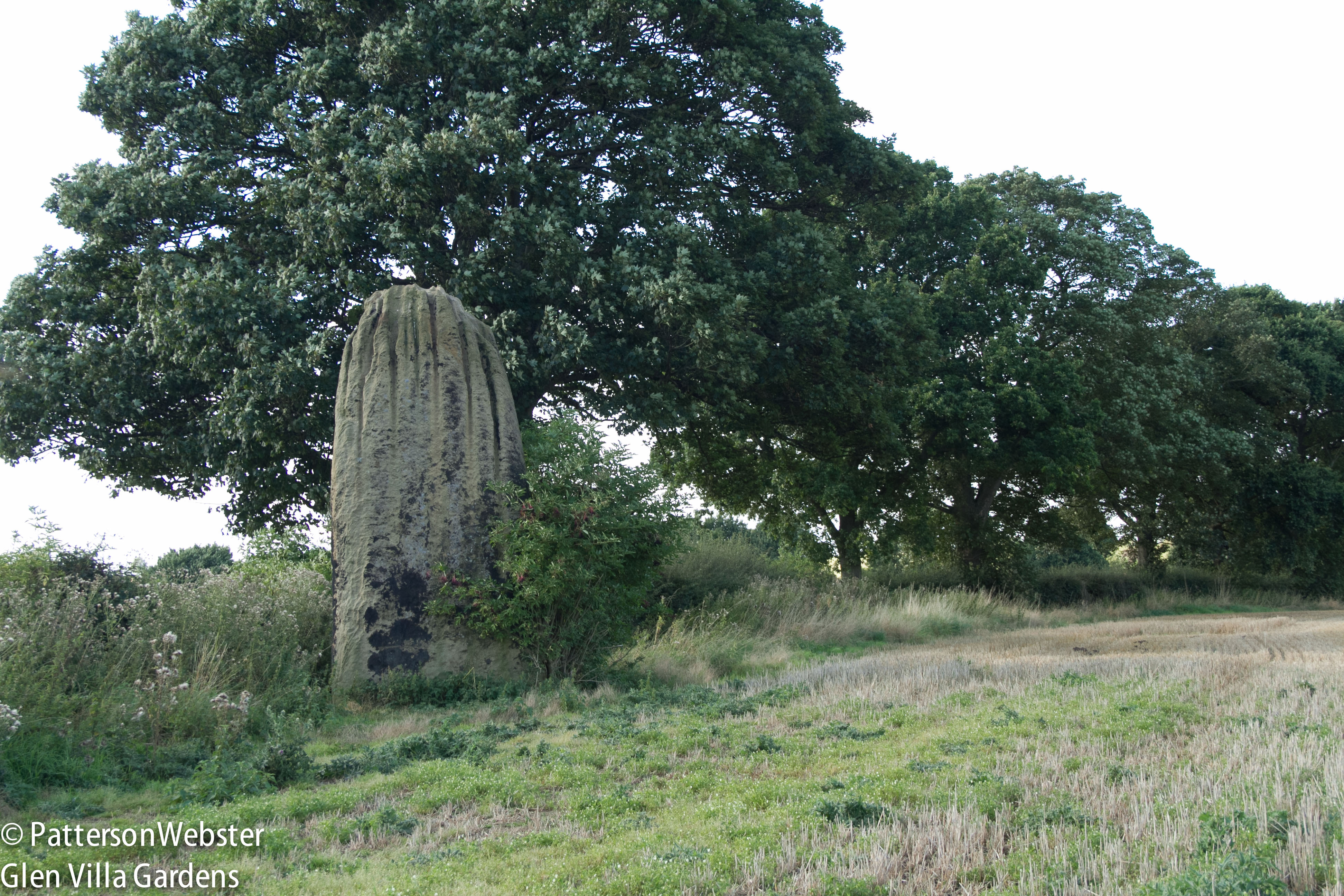
The shorter stone is more deeply grooved than the taller one.
Both stones are deeply grooved, as if a wide-toothed comb had been drawn through wet mud. Geologists say the grooves are caused by millennia of rainfall and while I’d prefer a more romantic explanation, I saw no trace of any tool workings, so I suppose they must be correct.
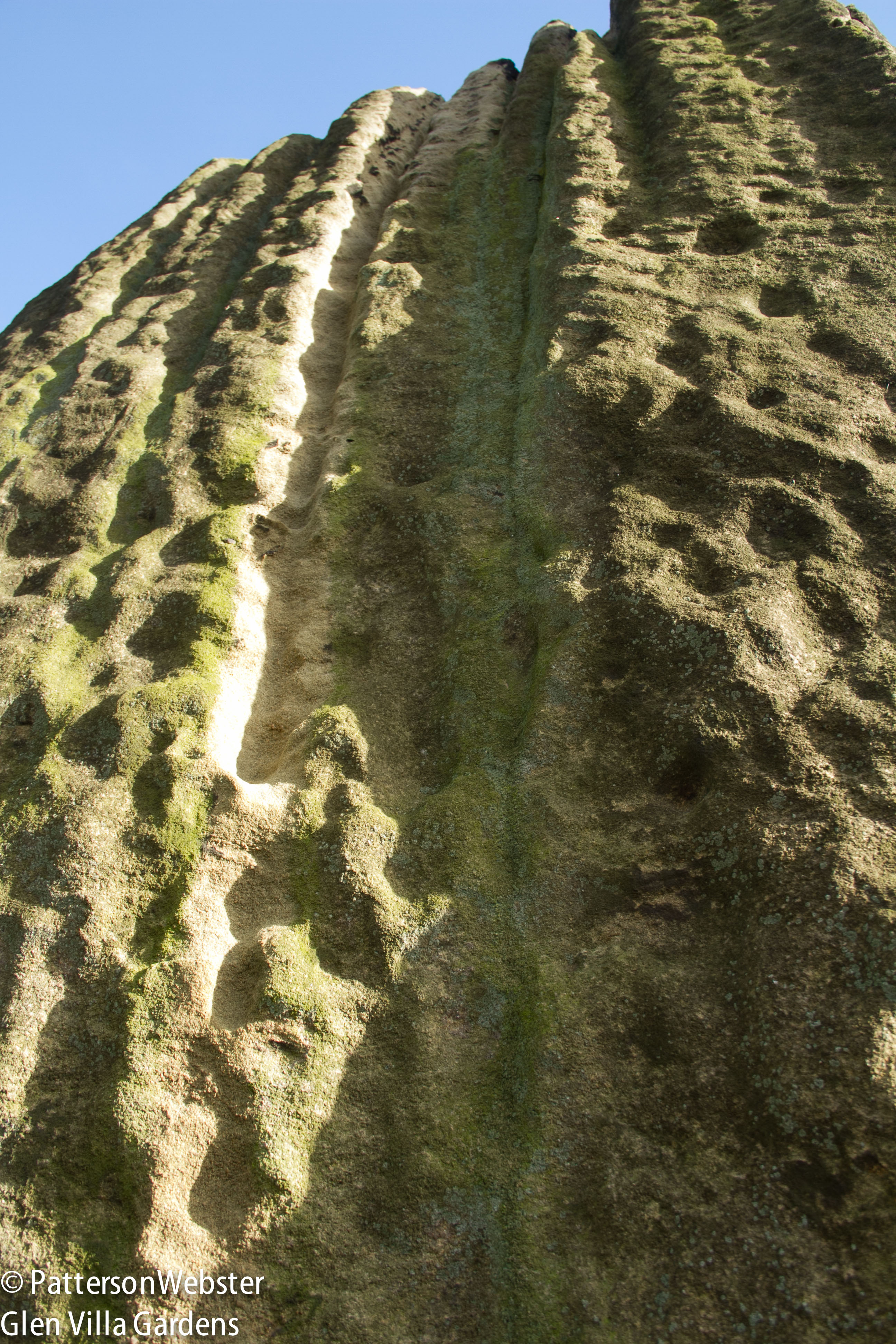
Knowing that the grooves were caused by rainfall may not be romantic but that explanation does emphasize just how long these stones have been standing upright, exposed to the elements.
Some distance away, a third stone from the same period stands in a line that runs roughly NNW-SSE. This alignment makes it clear that the monoliths were not randomly but purposefully placed, possibly to mark the most southerly spot where the moon rises in the summer.
The stones form part of a neolithic complex that include henges, cursuses, burial grounds and settlements. (Cursuses are large parallel banks of earth with external ditches that are some of the oldest prehistoric monumental structures in the UK. Traditionally they were thought to mark ceremonial routes; more recent study suggests they were places for ceremonial competitions, where young men proved themselves worthy of being seen as adults.) All are part of an ancient ritual landscape described by English Heritage as the most important ancient site between Stonehenge and the Orkney Islands.
The stones are composed of millstone grit, the most likely source of which is Plumpton Rocks, about nine miles away. Moving them that distance may have taken six months or more — which is not surprising since the taller stone weighs some 25 tons.
Putting them in place must have required great skill and the cooperative work of many strong backs and hands. Excavations in 1709 revealed that cobbles, grit and clay had been packed around the stones to hold them in place and that the base of the taller stone had been smoothed off so it could sit squarely on the hard-packed clay beneath. The work paid off. Although today the stone leans noticeably to one side, it nonetheless remains erect.
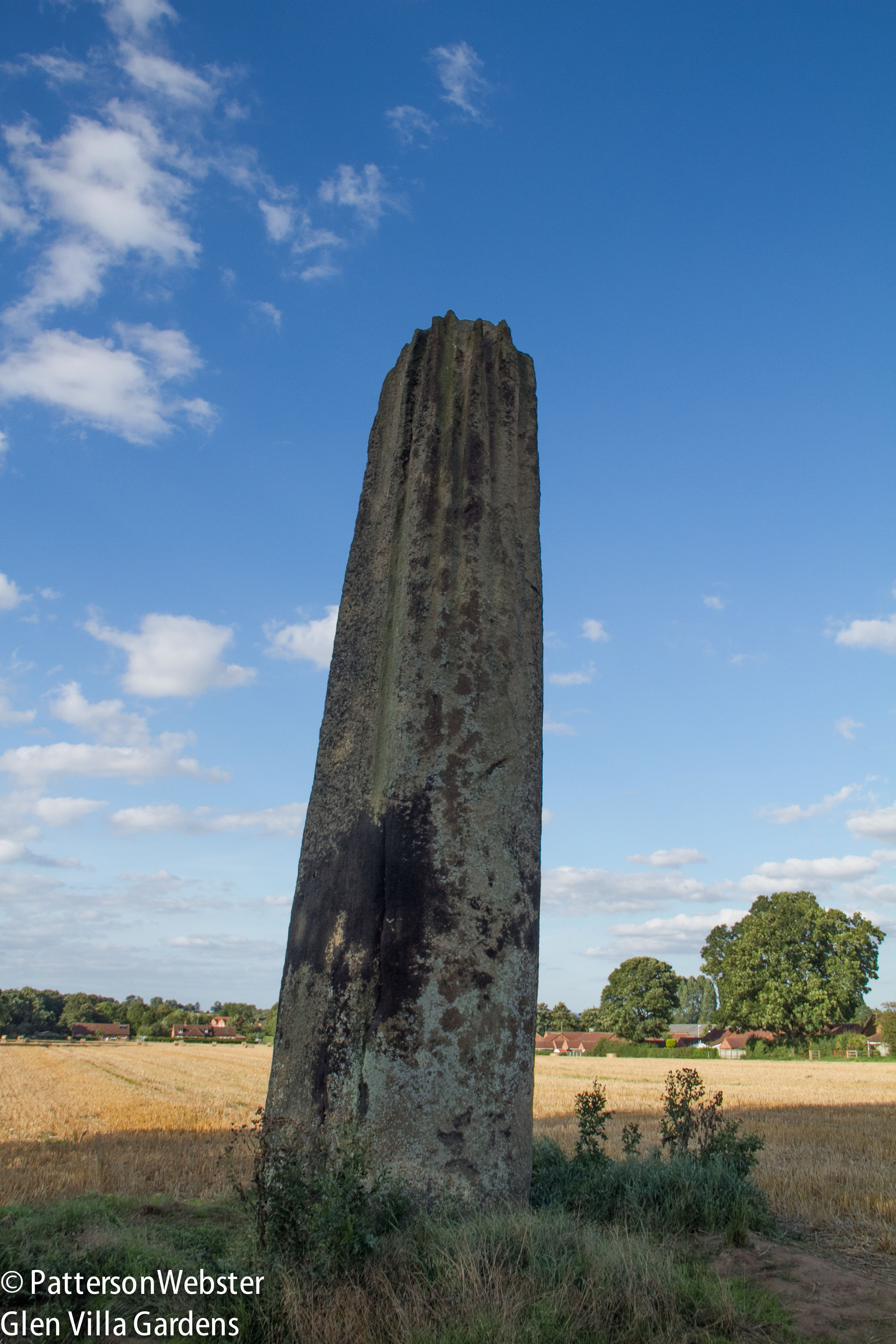
Lichen growing on the stone reinforce the feeling of antiquity. The tilt makes looking up a dizzying experience.
The name, the Devil’s Arrows, comes from a legend dating to the early 1700s. The inhabitants of the nearby town of Aldborough had somehow angered the devil. To punish them, he stood on the top of a hill and shouted that he would destroy the town: “Borobrigg keep out o’ way, for Aldoborough town I will ding down.” His aim was off, or perhaps his throwing arm was unaccountably weak that day, and the stones landed well short, near Boroughbridge instead of Aldborough.
Investigating standing stones is not a normal activity on a tour of gardens. But this tour is not a standard, garden variety, tour. While we saw many gardens where beautiful flowers took centre stage, we also visited more unusual sites. Among them were four works by Charles Jencks, including his home garden, The Garden of Cosmic Speculation, and his most recent project, The Crowick Multiverse.
I came to see these contemporary projects that shape the earth as part of a continuum, the most recent chapter in a long narrative that started with standing stones, henges and burial sites. The menhirs dating from so long ago formed an early chapter and made it clear to me how important it is to us human beings to mark the land and to mark our location within it.
And if witches or druids remain, all the better.
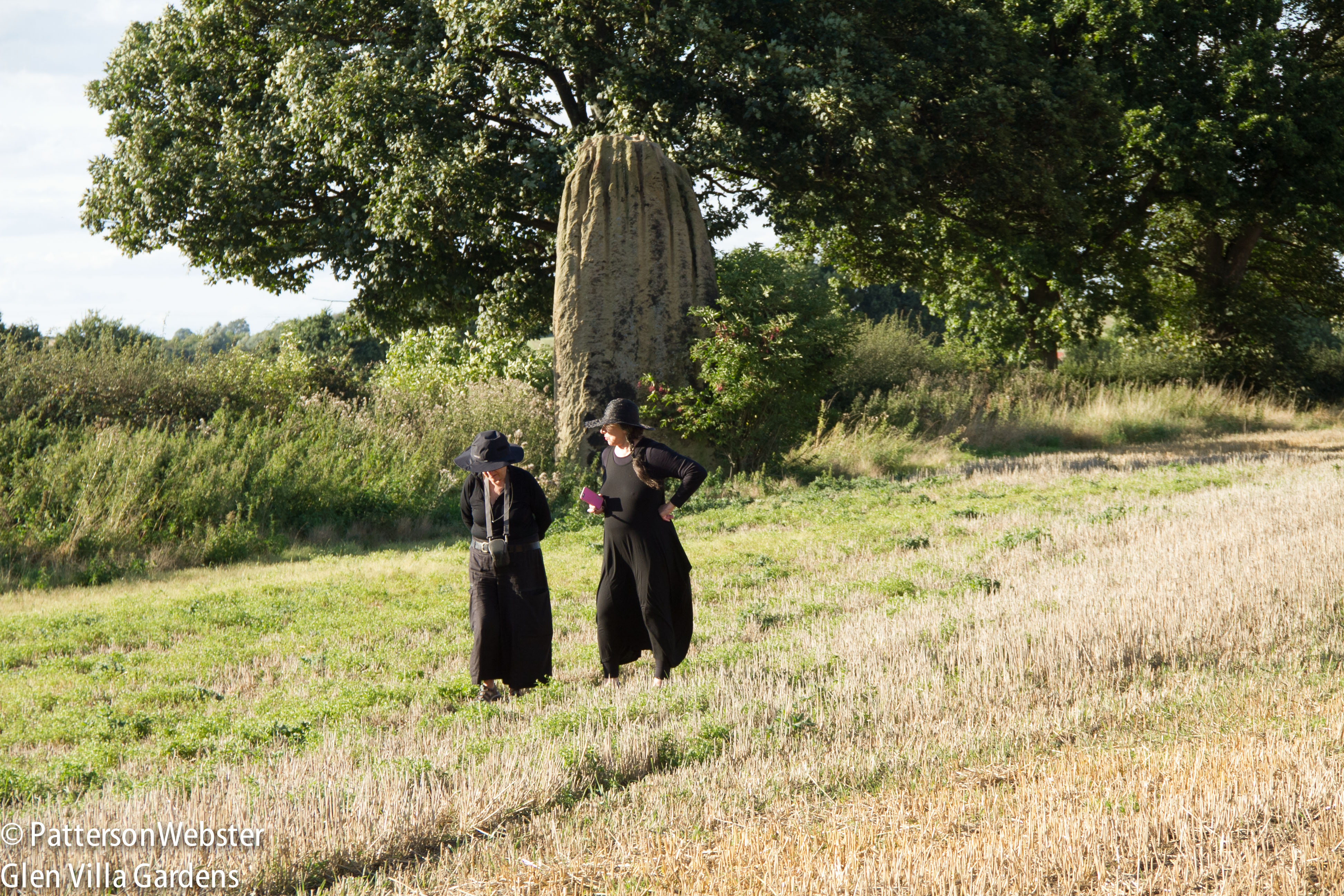
Two figures walk past a standing stone, deep in conversation. What do you think they were discussing?
Special thanks go to Jo Woolf and her blog The Hazel Tree where I first read about the Devil’s Arrows.





I’ve marvelled at prehistoric stonework in England and Ireland. This would be somewhere to add to the wish list. It reminds me of the joke about the difference between Europeans and North Americans: Europeans think that 100 miles is a long distance; North Americans think that 100 years is a long time.
Helen, what a great joke. It’s new to me which makes it even better. I will use it somehow, be sure of that.
This looks like fun and hope you are enjoying your trip/tour!
Today I head back to Montreal. It’s been an outstanding tour.
Your next trip has to be to Orkney. XXx
I would LOVE to take that trip.
I think I’ve read that Neolithic peoples had more complex cultures than previously thought. Imagine the share of limited resources that must have gone into dragging those stones to their present place. They must have had a very fundamental significance – or perhaps this was a project that organized and defined the society of the time.
Neolithic circles and standing stones appear regularly in parts of England, Scotland, Ireland and Brittany. Clearly they were important elements of those societies. It’s staggering to think of the time and effort that went into finding the right source for the stones, cutting them, hauling them and erecting them in place. As you say, they must have had a fundamental significance for the community.